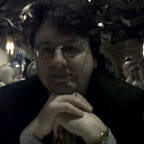Sound and Fury: The Making of the Donald
By Martin Burns
“Some of the parallels are more striking than others, but one in particular was bound to have caught the precocious Mary’s eye: When Faulkner created the character of Jason Compson in his 1929 novel, he introduced us to Donald Trump almost two decades before baby Donald drew his first breath. Cynical, rapacious, dishonest, bloated with self-regard and disdain for everyone around him, Jason Compson must have looked mighty familiar to Mary Trump, who, were she a Southerner, would have been muttering under her breath, I know his people. If she needed further convincing, Jason is an angry, garrulous bore who can’t stop talking about the way the world has let him down. “How Mary Trump Found Herself in the Hot Mess of a Faulkner Novel,” Malcolm Jones, the Daily Beast, July 7, 2020
William Faulkner’s imaginary Yoknapatawpha County is just about as far away from Queens, New York as you can get in terms of geography, climate and culture. Nonetheless, it must have all seemed very similar to the Queens native Mary Trump who went on to study Faulkner as an English major at Tufts University (in the interest of full disclosure I also attended Tufts). The Trump family is as dysfunctional as any that Faulkner could have imagined.
In her memoir of growing up Trump (“Too Much and Never Enough”), Mary Trump paints a portrait of a family just about as dysfunctional as can be imagined. A grandfather, Frederick Trump Senior, who was cold, aloof and emotionally unengaged in any sort of positive way. Fredrick was complemented by his wife, Mary Anne MacLeod Trump, who was due to illness, almost absent entirely.
Mary’s father was Fred Jr. (or Freddy) the eldest son and heir apparent who was hounded by his father and tormented for his desire to pursue a career outside the Trump family real estate business. Eventually, frustrated by his failure to please his family, Freddy succumbed to alcoholism in his early forties, leaving Mary fatherless in her early teens. Mary’s depiction of her father’s funeral as an event devoid of any human feeling what so ever is truly heartbreaking. (One thing that other reviewers have not noted — Mary Trump is an outstanding writer.)
Then there are the depictions of her uncle. The man that New York tabloids would refer to as “the Donald.” Unfortunately, her depictions are all too familiar to anyone who has paid any attention to public affairs over the last six years. We see Donald Trump in all his pettiness and cruelty. The president we see in the Rose Garden or via twitter is the same person who cruelly hid his younger brother’s toys or as a young man tried to deny his ill nephew health care.
Mary Trump reminds us that:
“Every time you hear Donald talking about how something is the greatest, the best, the biggest, the most tremendous (the implications being that he made them so) you have to remember that the man speaking is still in essential ways, the same little boy who is desperately worried that he, like his older brother, is inadequate and the he, too, will be destroyed for his inadequacy. At a very deep level, his bragging and false bravado are not directed at the audience in front of him but at his audience of one: his long dead father.”
Psychoanalyzing American presidents is not a new phenomenon. Aides to Lyndon Johnson informally consulted with psychiatrists and a cottage industry has grown up psychoanalyzing Richard Nixon. These efforts have fallen somewhat flat because those with access did not have the psychological expertise and those with expertise did not have the access.
Following her foray into English literature after completing a master’s degree at Columbia, Mary Trump switched fields and went on to achieve a Ph.D. in clinical psychology. Thus, for the first time in history we have a trained analyst who has had access to a president. What this means is that we cannot just dismiss Mary Trump’s conclusions as the ravings of an aggrieved relative. She is a medical professional.
If you want to understand President Trump, “Too Much and Never Enough” is essential reading as unpleasant as Mary Trump’s depictions of the Trump family are. We also need to listen to her judgments as a trained psychologist. Most chilling of all, as Mary Trump put in a recent media interview we need to know that “It is going to get worse.” We cannot say that we haven’t been warned.
